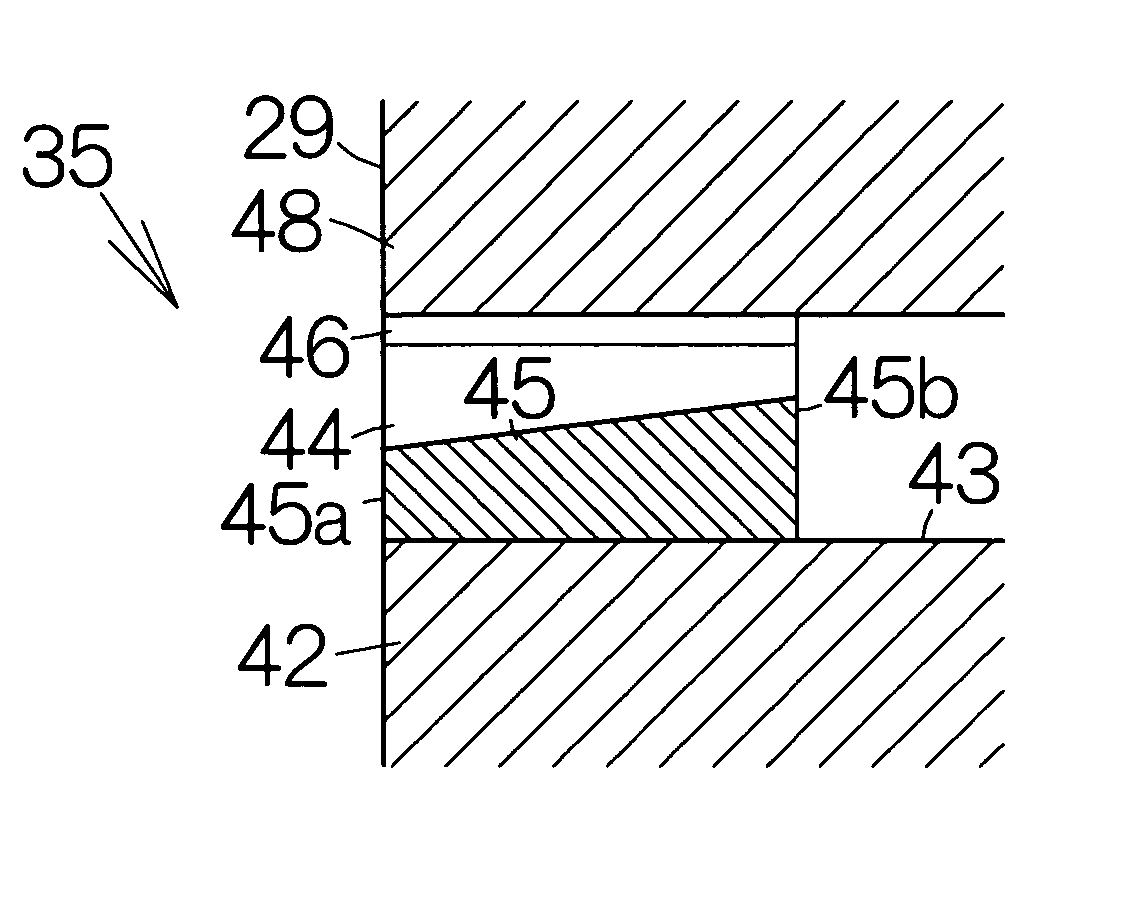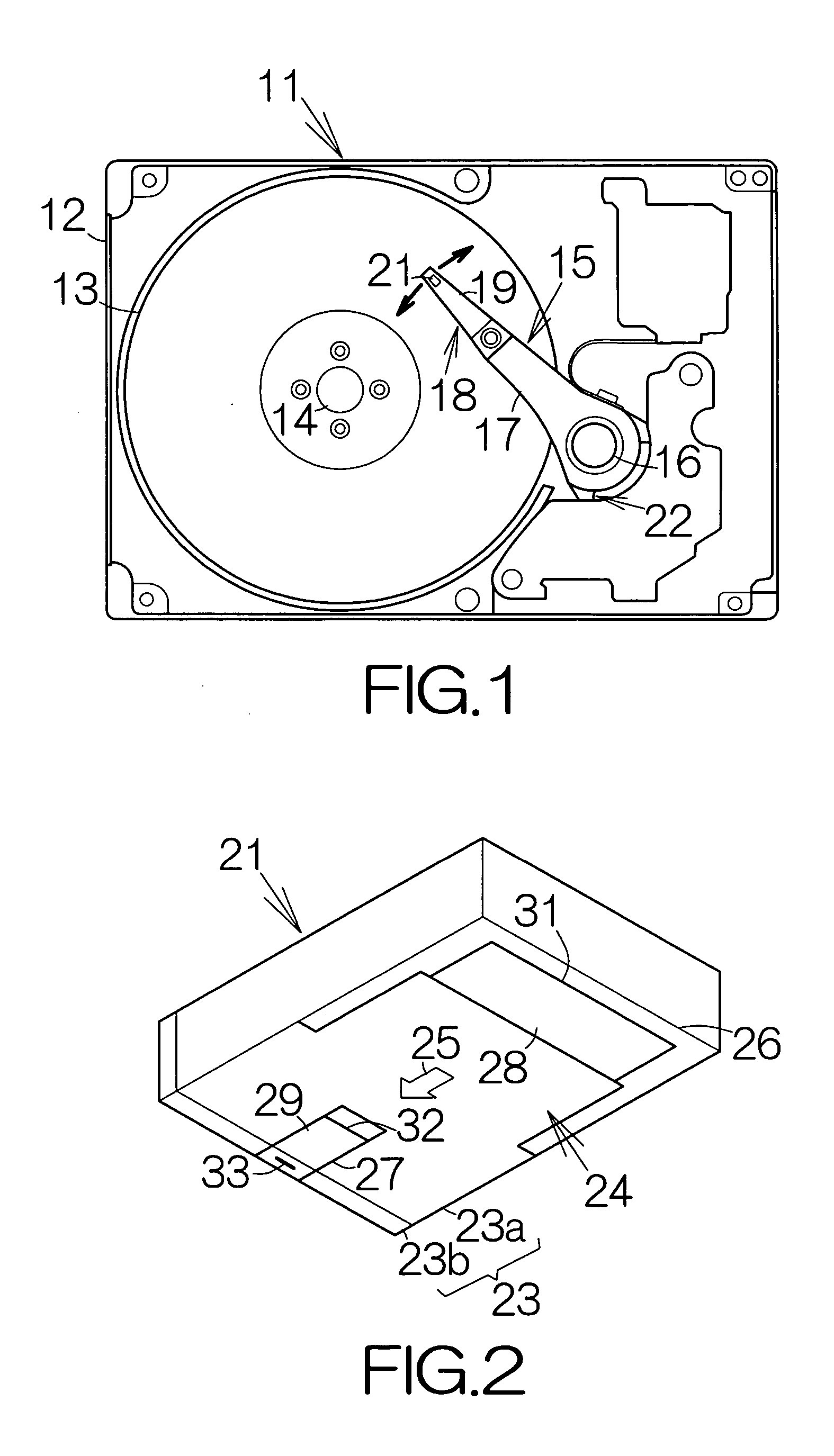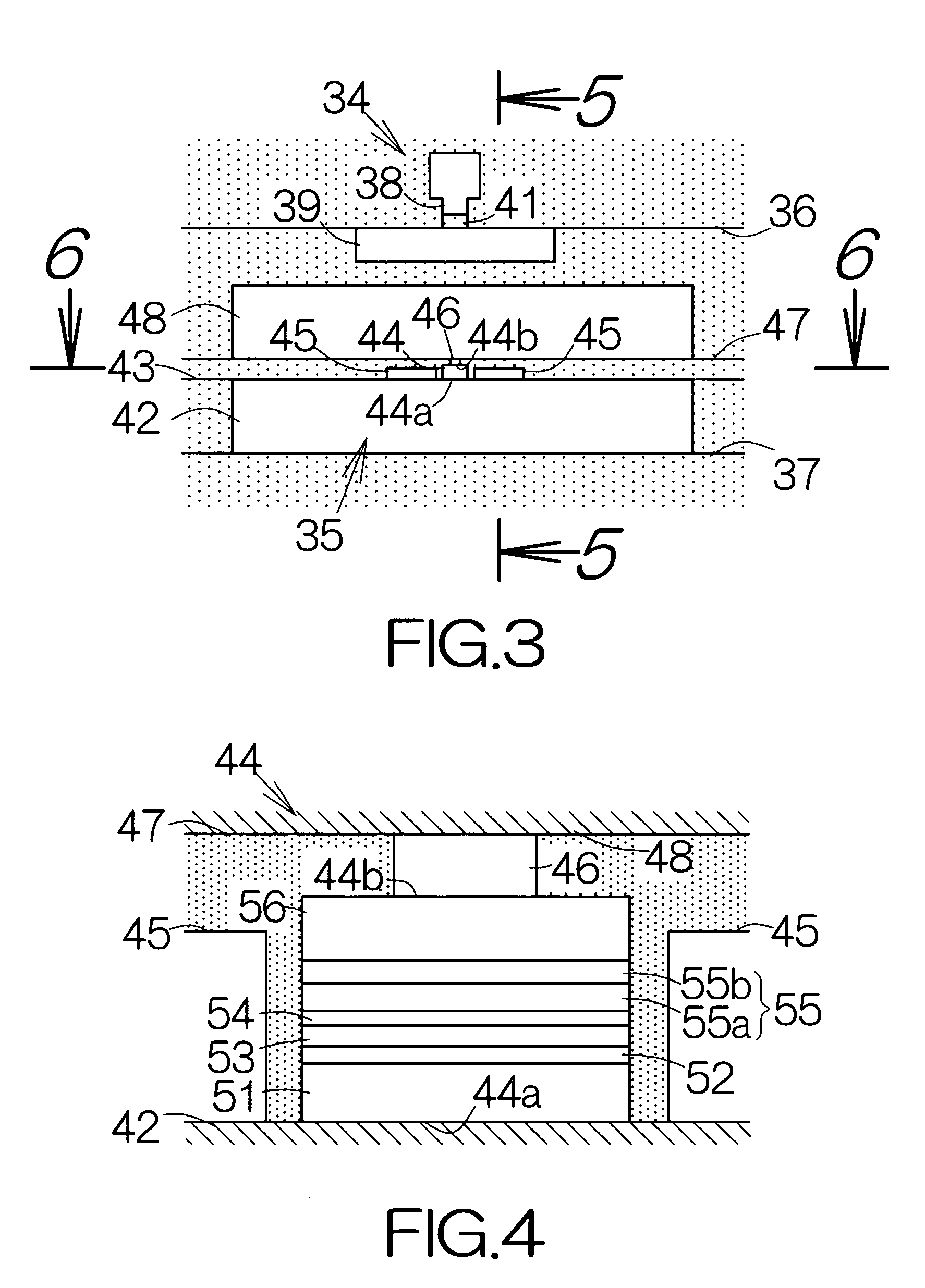Current-perpendicular-to-the-plane structure magnetoresistive element and head slider
a technology of magnetoresistive elements and perpendicular to the plane structure, applied in the field of magnetoresistive elements, can solve the problems of deteriorating affecting the establishment of a single domain property in the free ferromagnetic layer, and excessive magnetic field acting in this direction, so as to achieve a higher current level without reducing the sensitivity of the magnetoresistive film
- Summary
- Abstract
- Description
- Claims
- Application Information
AI Technical Summary
Benefits of technology
Problems solved by technology
Method used
Image
Examples
first embodiment
[0064]FIG. 5, schematically illustrates the structure of a CPP structure magnetoresistive (MR) read element 35 according to the present invention. The CPP structure magnetoresistive read element 35 allows establishment of first and second regions 45a, 45b in the domain controlling films 45, respectively. The second region 45b is set thicker than the first region 45a. Here, the thickness of the domain controlling films 45 may gradually increase from the front end to the rear end, for example. Specifically, an inclined surface having an inclination angle to the flattened surface 43 may be defined over the surfaces of the domain controlling films 45.
[0065] As shown in FIG. 6, the first region 45a induces establishment of a first biasing magnetic field 58 having a first intensity of magnetic flux across the magnetoresistive film 44 along the front end of the magnetoresistive film 44. The second region 45b induces establishment of a second biasing magnetic field 59 having a second intens...
second embodiment
[0073]FIG. 11 schematically illustrates the structure of a CPP structure magnetoresistive read element 35a according to the present invention. The CPP structure magnetoresistive read element 35a allows establishment of first and second regions 45a, 45b in the domain controlling films 45. The first region 45a has a first thickness while the second region 45b has a second thickness larger than the first thickness. A step may be defined between the upper surfaces of the first and second regions 45a, 45b. The CPP structure magnetoresistive read element 35a allows establishment of the first biasing magnetic field 58 of the first intensity along the front end of the magnetoresistive film 44. The second biasing magnetic field 59 of the second intensity larger than the first intensity is established near the rear end of the magnetoresistive film 44.
[0074] A magnetic film of a uniform thickness is formed on the flattened surface 43 of the lower electrode 42 in a method of making the CPP stru...
third embodiment
[0077]FIG. 13 schematically illustrates the structure of a CPP structure magnetoresistive read element 35b according to the present invention. The CPP structure magnetoresistive read element 35b include a front film 65 extending rearward from the air bearing surface 29 and a rear film 66 extending rearward from the rear end of the front film 65. The front film 65 is made of a material of a first composition having a first residual magnetic flux density. The front film 65 corresponds to the first region 45a. The rear film 66 is made of a material of a second composition having a second residual magnetic flux density larger than the first residual magnetic flux density. The rear film 66 corresponds to the second region 45b. The material of the first and second composition may be a magnetic material including at least one element from a group consisting of Fe, Ni and Co. Here, the domain controlling films 45 have a uniform thickness. Since the first region 45a is made of the material o...
PUM
| Property | Measurement | Unit |
|---|---|---|
| thickness | aaaaa | aaaaa |
| thickness | aaaaa | aaaaa |
| magnetoresistive | aaaaa | aaaaa |
Abstract
Description
Claims
Application Information
 Login to View More
Login to View More - R&D
- Intellectual Property
- Life Sciences
- Materials
- Tech Scout
- Unparalleled Data Quality
- Higher Quality Content
- 60% Fewer Hallucinations
Browse by: Latest US Patents, China's latest patents, Technical Efficacy Thesaurus, Application Domain, Technology Topic, Popular Technical Reports.
© 2025 PatSnap. All rights reserved.Legal|Privacy policy|Modern Slavery Act Transparency Statement|Sitemap|About US| Contact US: help@patsnap.com



